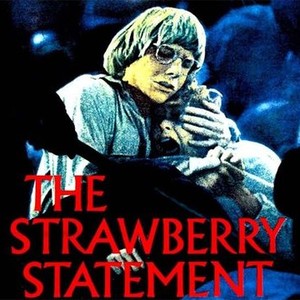

He indulges in countless zooms, montages, constant cross-cutting, and camera movement, and pounds us with heavy-handed images by shooting through a hole in the American flag and barbed wire- presumably to convey what the American dream has turned into. He gratuitously trots out every camera angle and technique he can think of, using bird’s-eye views, extreme low angles, and reflection in eyeglass shots. But what is more troubling is that the film’s director, Stuart Hagmann-making his first feature, having done all his previous work in commercials and for television-was so in love with being stylistically inventive that he barely allows the film a quiet or reflective moment. The film wastes much too much footage on the relationship between Simon and Linda, which never arouses a scintilla of interest. He’s willing to put his body on the line, and even declaims against the racism and brutality of the police.

(In fact, none of the women protestors are given more than a walk-on role.) Simon, whose commitment is desultory, sneaks out from the sit-in each morning to practice with the rowing team. She’s supposedly a committed activist, but her politics, beyond nebulous talk about caring, are muddled and unconvincing. He joins the strike in pursuit of a pretty girl, Linda (a bland, undefined Kim Darby). Simon (Bruce Davison) is sweet, considerate, committed to getting a college education, and vaguely liberal, though not particularly political. The film transposes the book from Columbia to a nameless university in San Francisco where the students are on strike and occupy the administration building. Playwright Israel Horovitz ( The Indian Wants the Bronx) adapted the film from Kunen’s book. Kunen describes himself, at the beginning of the protests, as someone that will “do anything to feel like I'm doing something." He becomes deeply engaged and radicalized-expressing rage with the cops and revulsion with the university’s administrators. The Strawberry Statement was based on James Simon Kunen’s smart, quirky, humorous book of the same name, which looks at the spring 1968 Columbia Strike through the eyes of an undergraduate, who never turned into a revolutionary. For every first-rate Bonnie and Clyde (1967) and The Graduate (1967) there were many more films like Getting Straight (1970) and The Strawberry Statement (1970) that seemed more interested in exploiting than rendering the times. In the late Sixties and early Seventies, Hollywood tried to capture the hip youth market with films of varying quality. Preston Ames starring Bruce Davison and Kim Darby. Produced by Irwin Winkler and Robert Chartoff directed by Stuart Hagmann screenplay by Israel Horovitz, based on James Simon Kunen’s The Strawberry Statement: Notes of a College Revolutionary music by Ian Freebairn-Smith cinematography by Ralph Woolsey edited by Marje Fowler art direction by E.


 0 kommentar(er)
0 kommentar(er)
